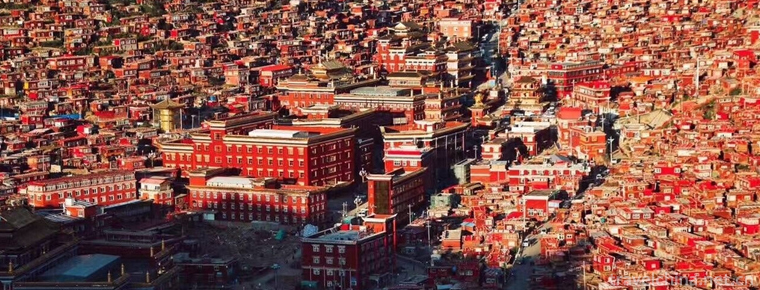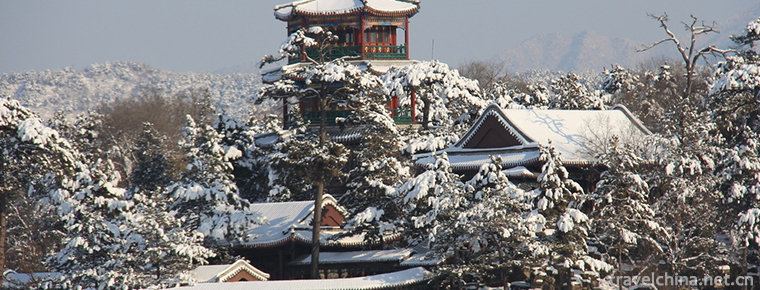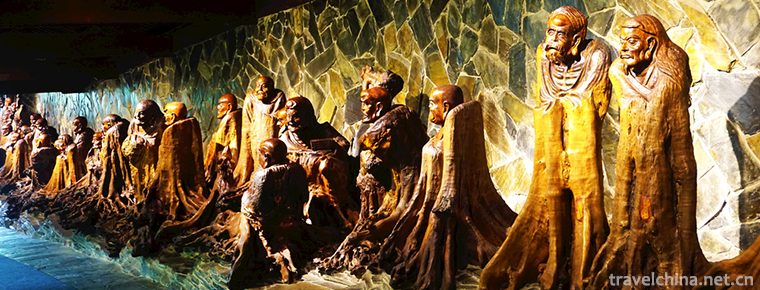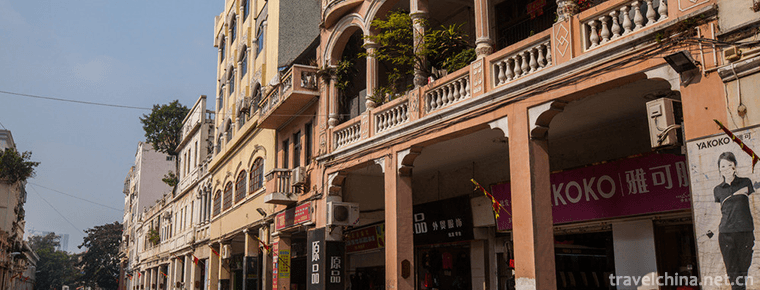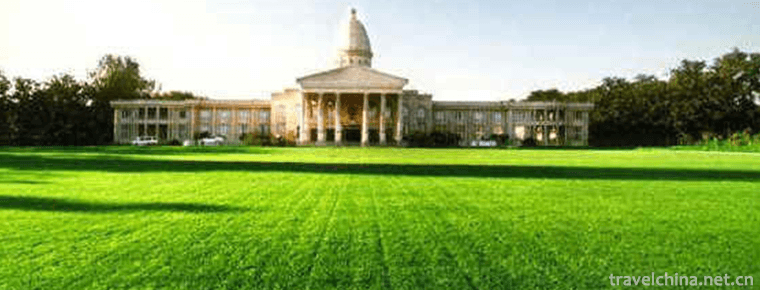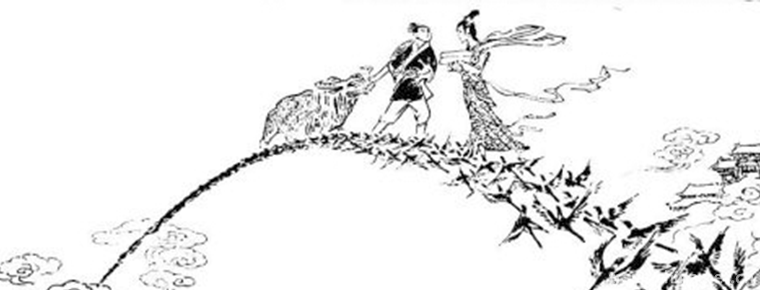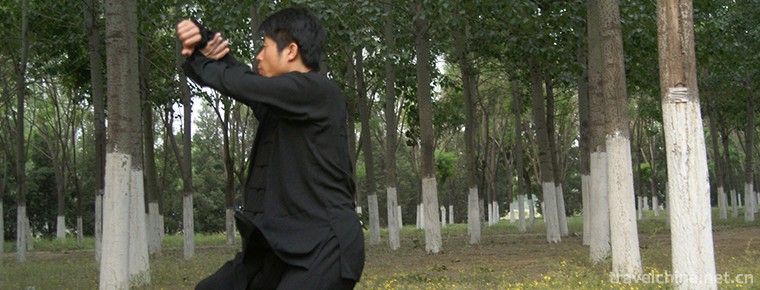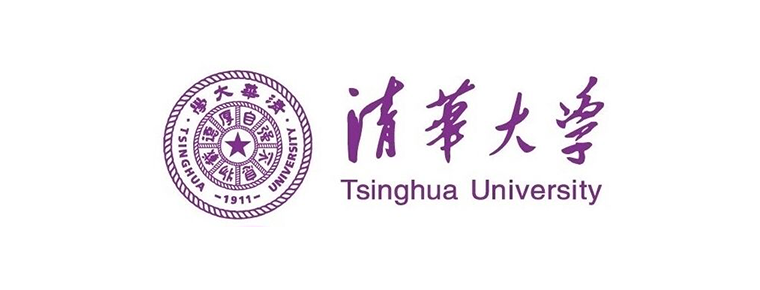Mulan Legend Hua Mulan Legend
Mulan Legend Hua Mulan Legend
Mulan legend, Yucheng City, Shangqiu City, Henan Province, and Huangpi District, Wuhan, Hubei Province, is one of the national intangible cultural heritage.
Mulan legend is one of the Chinese folklores. Mulan legend began in Sui and Tang Dynasty. It is characterized by the spread of Chinese folk oral language in the early period, and then by the appearance of complete and concise written forms. There are nine plots. The story has been handed down from the Sui Dynasty to the present. It contains more than a thousand years of historical information in various historical stages, involving ethics, folklore, religion, literature, art and other aspects. It is of great historical research value.
On June 7, 2008, Mulan Legend was approved by the State Council to be included in the second batch of national intangible cultural heritage list, numbered I-50.
Background of declaration
In March 2007, the Mulan Legend declared by Yucheng County of Shangqiu City was listed as the first batch of Henan Province-level intangible cultural heritage.
On May 22, 2007, the Chinese Association of Folk Literary and Artists made a decision to officially name Yucheng County as the "Town of Mulan in China", and agreed to establish the "Mulan Culture Research Center of China" in Yucheng County of Shangqiu City.
On June 6, 2007, Mulan Legend declared by Huangpi County of Wuhan City was listed as the first batch of intangible cultural heritage in Hubei Province.
In November 2007, Huangpi County began to declare Mulan Legend to the National Committee of Experts on the Protection of Intangible Cultural Heritage.
On June 7, 2008, the Mulan Legend jointly declared by Huangpi District of Wuhan, Hebei Province and Yucheng County of Shangqiu City, Henan Province, was approved by the State Council and listed in the second batch of national intangible cultural heritage list and publicized.
On June 14, 2008, Mulan Legend declared by Huangpi County, Hubei Province, was included in the second batch of national intangible cultural heritage list.
historical origin
The story of Mulan Legend originated in Sui and Tang Dynasty. The Mulan Ci in Guyuefu was written by Li Pharmacist, the national teacher in the early Tang Dynasty. This period is the primary period, and it is characterized by the spread of early folk oral language. Since then, it has been characterized by complete and concise writing. Finally, the main features are the comprehensive interpretation of Mulan's ideological connotation and the diversification of its manifestations. The Song, Yuan, Ming and Qing Dynasties are the period of evolution, with the further emphasis and enrichment of Mulan's ideological and ethical connotation and the more literary and artistic transformation of Mulan's image as the main features. In modern times, it is a period of development, characterized by highlighting the noble spirit of Mulan's thoughts and feelings. The contemporary era is a period of change, with Mulan legend as a traditional human resource as the main feature.
Story content
Dispute over surnames
The story of Hua Mulan has a long history and has been well-known for more than a thousand years. However, there are still many legends about her family name, Liju and birth age.
About her surname, some people say it is Wei (Daming Unified Records, Daqing Unified Records, Henan Tongzhi, Guide Fu Zhi, Shangqiu County Zhi, Yucheng County Zhi, Bozhou Zhi, Wanxian Zhi, etc.); others say it is Mulan; others say it is Zhu (Qing Dynasty's Biography of Loyalty, Filial Piety and Wonderful Woman, the True Book of Salvation of General Mulan Zhongli).
This surname of Mulan is commonly known in the folk. There are three possibilities: one is that Mulan is a kind of flower name, which is inverted from Mulan; the other is that Mulan is called "Hua Gu", which is the nickname of Mulan; and the biggest one is the miscellaneous drama "Four Sounds of Apes" written by Xu Wei, a dramatist of the Ming Dynasty.
The title of a play in "Four Voices of Apes" is "Female Magnolia Entering the Army on behalf of Her Father". The plot of this play came from the Romance of Mulan Ci in Yuefu Poetry Collection of the Northern Song Dynasty, but Mulan has no surname in Mulan Ci. For the need of theatrical performance, Xu Wei gave Mulan a "flower" surname, highlighting the female beauty of Mulan. He also named Mulan's father "flower arc". In fact, the so-called "flower arc" is the homonym of "flower vague", implying the meaning of vague names, which is a common method used by writers.
Later, Mei Lanfang, a master of Peking Opera, adapted Mulan to join the army. He was more cautious at that time, and did not add his surname to Mulan when it was difficult to access information. Until after liberation, Chang Xiangyu, an artist of Henan Opera, adapted the Beijing Opera "Mulan Entering the Army" into Henan Opera, named "Hua Mulan", and toured the country. She also made movies, which had a wide influence. So far, the term "Hua Mulan" has been well known among the people, and it has spread widely, which makes people really mistake Mulan as "Hua".
Household Registration in the 1990s
As for the age of Hua Mulan's birth, Cheng Damao in the Song Dynasty said she was from the early Tang Dynasty in Yan Fanlu. Yao Ying in the Qing Dynasty said that she was from Emperor Xiaowen in the Northern Wei Dynasty to Emperor Xuanwu in Yingguo Town, Gushu County (now Shangqiu Yucheng County); Song Xiangfeng's Guoting Lu in the Qing Dynasty and Guide Fu Zhi and Bozhou Zhi recorded that she was from Emperor Gongdi in the Sui Dynasty. Huangpi County Chronicle records that she was born in Zhenguan of Tang Dynasty.
"Henan Tongzhi", "Guide Fu Zhi" and "Bozhou Zhi" all said that she was from Yingguo Town, Gushu County, Songzhou in the Sui Dynasty, and Lu Kun in the Ming Dynasty recorded in "Boudoir Fantu Shuo" "Mulan, Shangqiu people." The Records of the Unification of the Qing Dynasty said that she was from Dongwei Village in Xuxian County. The Qing Dynasty "Bozhou Chronicle" Volume 1 Geographic Records: "The Yuan Dynasty has a statue of a filial piety general temple, the general's name Mulan, Bozhi people. Suiyang is eighty miles southeast of the border. It is called Yingguo, the ancient Bofang area and the ruins of filial piety. Guo Jinyingguo is Yingguoji, seventy miles southeast of Shangqiu. Hou You thought that the ancient Bo area, the ruins of filial piety, filial piety to the people. And the former residence here, we can see that Yingguo's land belongs to Shangqiu, which used to belong to banishment.
The Qing Dynasty novel The Story of Loyalty, Filial Piety, bravery and Woman claims that Mulan was a native of Xiling County, Huangzhou Prefecture in the Tang Dynasty.
Inheritance value
The main value of Mulan Legend lies in: Firstly, the story has been handed down from Sui Dynasty to the present. It contains information of various historical stages in China for more than a thousand years, involving ethics, folklore, religion, literature, art and other aspects, and has precious historical research value.
Secondly, the story has been made into one of the oldest classical legends in China for thousands of years, and it has been continuously supplemented and innovated while spreading. It has the open quality of keeping pace with the times for refining, rich in excellent ideological resources for excavation, and contains many successful creative experiences for reference. While prospering our literary and artistic creation, it can be endowed with the requirements of the times. Its new ideological connotation makes it serve the contemporary construction of "three civilizations".
Thirdly, the spirit of "loyalty, filial piety and bravery" praised by Mulan legend, which centers on the feelings of home and country, is of great practical significance in today's construction of socialist spiritual civilization and socialist harmonious society. As a folk literary and artistic work, it developed and matured in Huangpi's unique historical and cultural atmosphere. It not only highlighted the theme of "loyalty, filial piety and bravery festival", but also thrilled and amazing. It spread to all parts of the country through various artistic creations such as rap, opera, film and television, and had a wide and far-reaching impact.
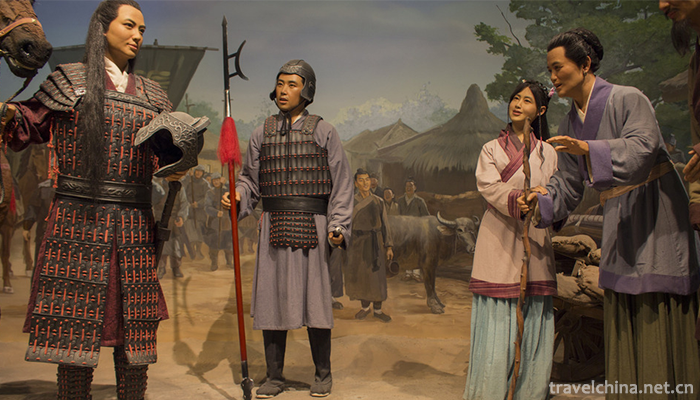
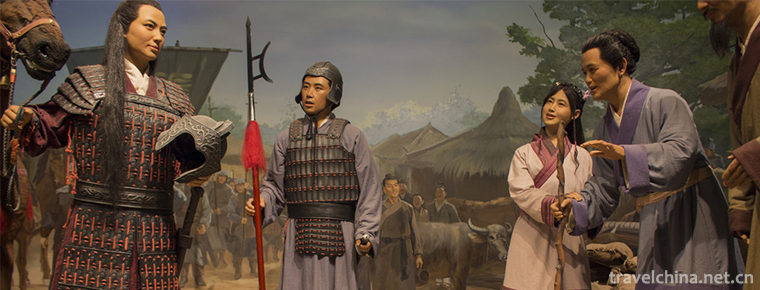
Mulan Legend Hua Mulan Legend
-
Sertar County
Sertar County is a county under the jurisdiction of Ganzi ...
Views: 246 Time 2018-10-12 -
Chengde Summer Resort and its surrounding Temple scenic spot
Chengde Summer Resort and its surrounding Temple scenic spot, World Cultural Heritage, established in 1994. It is located in Chengde City, Hebei Province
Views: 216 Time 2018-11-24 -
Root palace Buddhist Cultural Tourism Zone
Root palace Buddhist Cultural Tourism Zone / Gengong Buddha Country Cultural Tourist Area, National AAAAA Tourist Scenic Area, National Eco-civilization Education Base
Views: 156 Time 2018-12-07 -
Bao en Temple Pingwu
Pingwu Baoen Temple is located in Pingwu County, Sichuan Province. It is 184 kilometers away from Mianyang City and 300 kilometers away from Chengdu. Located in the northeast corner of the county town
Views: 199 Time 2019-02-07 -
Haikou Arcade Street
The old arcade street in Haikou is one of the most distinctive Street landscapes in Haikou. Four of the oldest buildings were built in the Southern Song Dynasty
Views: 266 Time 2019-02-07 -
Shenyang Green Island Tourist Resort
Located in Tonggou Township, Sujiatun District, Shenyang City, 15 kilometers away from Shenyang City, Green Island Tourism Resort is a comprehensive multi-functional tourist area
Views: 486 Time 2019-02-08 -
Qixi Festival
Qixi Festival, also known as Qiqiao Festival, Qijie Festival, Daughter's Day, Qiqiao Festival, Qiniang Club, Qiaoxi Festival, Bull Bull Mother's Day and Shuangqi Festival, is a traditional Chinese fes
Views: 271 Time 2019-06-09 -
Mantis Boxing
Mantis boxing is one of the famous Chinese traditional Wushu schools, and it is a kind of hieroglyphic boxing. It is one of the four famous boxing in Shandong Province and one of the first nine school
Views: 168 Time 2019-06-18 -
Xinhua Folk Song
Xinhua Folk Song is a kind of traditional folk song mainly spread in Xinhua County, Loudi City, Hunan Province. Xinhua folk song has a wide range of contents, old style, unique style, simple rhyme, ch
Views: 171 Time 2019-07-06 -
Tsinghua University
The campus of Tsinghua University is situated in northwest Beijing on the site of the former imperial gardens of the Qing Dynasty, and surrounded by a number of historical sites.
Views: 208 Time 2019-08-31 -
Liubeichi Park
Liubeichi park is located at No.4 Minjiang East Road, Yibin City, with an area of 238.18 mu. It is a national AAAA tourist attraction. It is a famous scenic spot and a key Park in Sichuan Province.
Views: 166 Time 2020-10-16 -
Mineral resources in Neijiang
Neijiang City is rich in mineral resources. Energy minerals mainly include coal, natural gas and oil shale; nonmetal and building materials minerals include limestone, sandstone, shale, refractory clay, bauxite, marble, river sand, gravel and ceramic clay, etc.;
Views: 362 Time 2020-12-16
